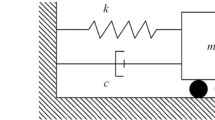Abstract
The most commonly used intensity measure in ground-motion prediction equations is the pseudo-absolute response spectral acceleration (PSA), for response periods from 0.01 to 10 s (or frequencies from 0.1 to 100 Hz). PSAs are often derived from recorded ground motions, and these motions are usually filtered to remove high and low frequencies before the PSAs are computed. In this article we are only concerned with the removal of high frequencies. In modern digital recordings, this filtering corresponds at least to an anti-aliasing filter applied before conversion to digital values. Additional high-cut filtering is sometimes applied both to digital and to analog records to reduce high-frequency noise. Potential errors on the short-period (high-frequency) response spectral values are expected if the true ground motion has significant energy at frequencies above that of the anti-aliasing filter. This is especially important for areas where the instrumental sample rate and the associated anti-aliasing filter corner frequency (above which significant energy in the time series is removed) are low relative to the frequencies contained in the true ground motions. A ground-motion simulation study was conducted to investigate these effects and to develop guidance for defining the usable bandwidth for high-frequency PSA. The primary conclusion is that if the ratio of the maximum Fourier acceleration spectrum (FAS) to the FAS at a frequency \(f_{saa} \) corresponding to the start of the anti-aliasing filter is more than about 10, then PSA for frequencies above \(f_{saa} \) should be little affected by the recording process, because the ground-motion frequencies that control the response spectra will be less than \(f_{saa} \). A second topic of this article concerns the resampling of the digital acceleration time series to a higher sample rate often used in the computation of short-period PSA. We confirm previous findings that sinc-function interpolation is preferred to the standard practice of using linear time interpolation for the resampling.










Similar content being viewed by others
References
Anderson JG, Hough SE (1984) A model for the shape of the Fourier amplitude spectrum of acceleration at high frequencies. Bull Seismol Soc Am 74:1969–1993
Atkinson GM, Boore DM (2006) Earthquake ground-motion prediction equations for eastern North America. Bull Seismol Soc Am 96:2181–2205
Boore DM (2005) SMSIM—Fortran programs for simulating ground motions from earthquakes: version 2.3—A revision of OFR 96–80-A, U.S. Geological Survey open-file report, U.S. Geological Survey open-file report 00–509, revised 15 Aug 2005, p 55. The latest version of the software (v. 4.0, as of 11 Oct 2013) is available from the online software link on http://www.daveboore.com
Boore DM (2013) TSPP—A collection of FORTRAN programs for processing and manipulating time series, U.S. Geological Survey open-file report 2008-1111 (Revision 4.4). Available from the online software link on http://www.daveboore.com
Douglas J, Boore DM (2011) High-frequency filtering of strong-motion records. Bull Earthq Eng 9:395–409
Nigam NC, Jennings PC (1969) Calculation of response spectra from strong-motion earthquake records. Bull Seismol Soc Am 59:909–922
Phillips C, Kottke AR, Hashash YMA, Rathje EM (2012) Significance of ground motion time step in one dimensional site response analysis. Soil Dyn Earthq Eng 43:202–217
Shannon CE (1998) Communication in the presence of noise (a reprint of the classic 1949 paper). Proc IEEE 86:447–457
Silva WJ, Darragh RB (1995) Engineering characterization of strong ground motion recorded at rock sites. Electric Power Research Institute, Palo Alto, CA. Report No. TR-102262
Turkowski K, Gabriel S (1990) Filters for common resampling tasks. In: Glassner AS (ed) Graphics gems I. Academic Press, Waltham, pp 147–165
Wikipedia (2013a) Whittaker–Shannon interpolation formula. http://en.wikipedia.org/wiki/Whittaker-Shannon_interpolation_formula. Accessed 09 Oct 2013
Wikipedia (2013b) Lanczos sampling. http://en.wikipedia.org/wiki/Lanczos_resampling. Accessed 09 Oct 2013
Acknowledgments
This study was sponsored by the Pacific Earthquake Engineering Research Center (PEER) as part of NGA-East, a project funded by the U.S. Nuclear Regulatory Commission (NRC), the U.S. Department of Energy (DOE) and the Electric Power Research Institute (EPRI), with the participation of the U.S. Geological Survey (USGS). Any opinions, findings, and conclusions or recommendations expressed in this material are those of the authors and do not necessarily reflect those of the organizations listed above. We thank Norm Abrahamson for making us aware of possible inaccuracies in response spectra computed from low sample rate data using the standard programs for the computations and for suggesting a solution to the problem. We also thank Albert Kottke for his input early on and for alerting us to the Phillips et al. (2012) paper, and Rasool Anooshehpoor, Robert Darragh, John Douglas, and an anonymous person for reviews of the manuscript.
Author information
Authors and Affiliations
Corresponding author
Rights and permissions
About this article
Cite this article
Boore, D.M., Goulet, C.A. The effect of sampling rate and anti-aliasing filters on high-frequency response spectra. Bull Earthquake Eng 12, 203–216 (2014). https://doi.org/10.1007/s10518-013-9574-9
Received:
Accepted:
Published:
Issue Date:
DOI: https://doi.org/10.1007/s10518-013-9574-9




